Recent News
Read the latest news and stories.
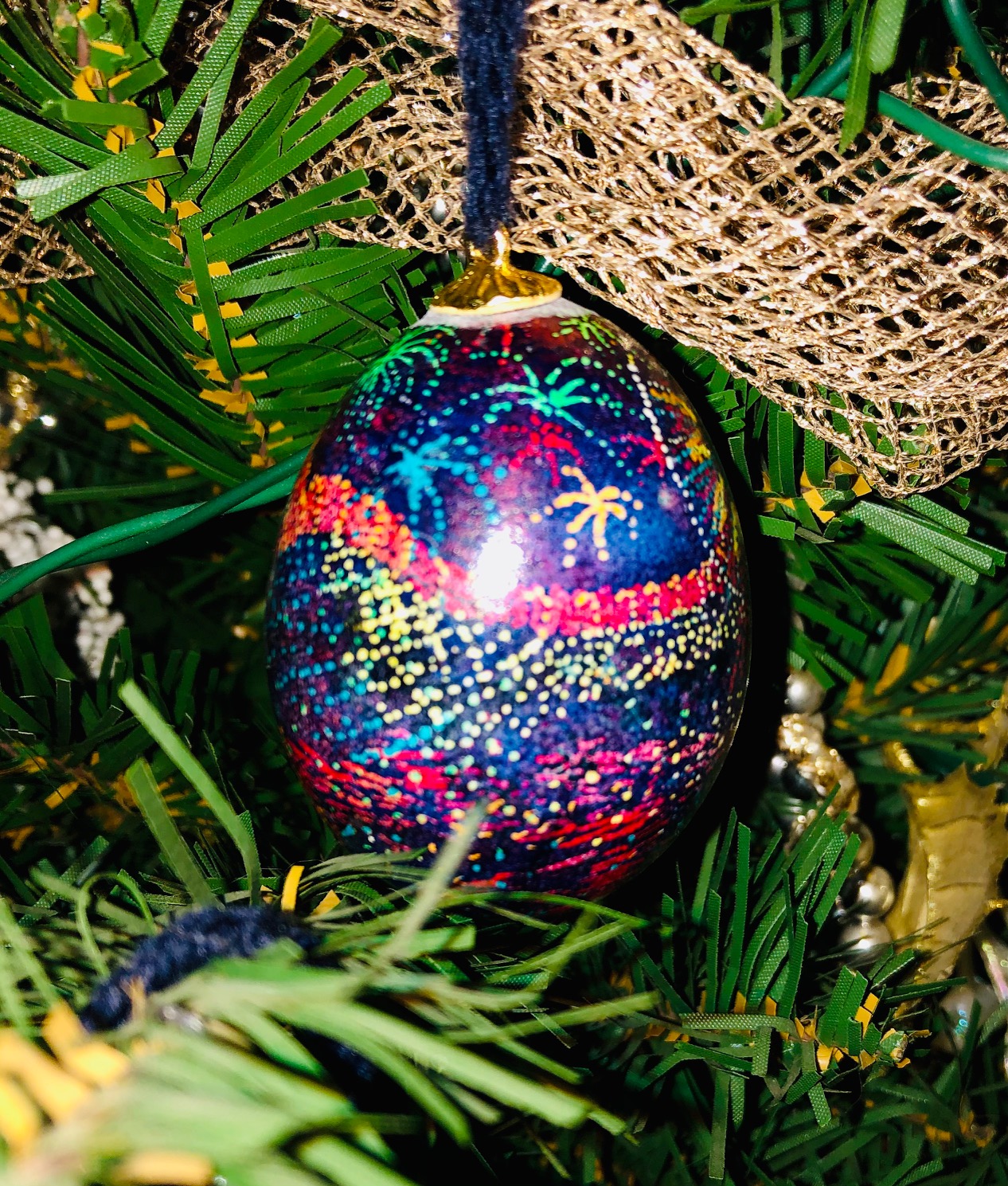
About Nolie Marie Wilson’s Pysanky
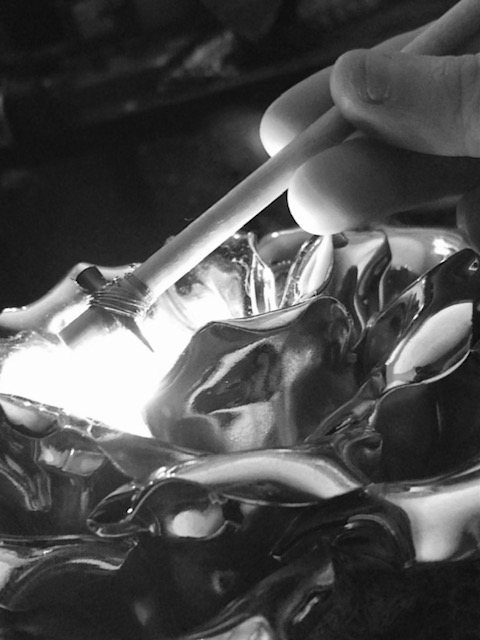
For many people, decorated eggs call to mind Easter egg hunts, bunnies, and baskets. But the art of decorating eggs dates back long before Christ lived (if you are a believer). Due to eggs’ symbolism as the place life springs from, decorated eggs would be adorned with symbols signifying varying wishes the creator might wish to bestow upon the one they gave or sold the egg to. Decorated eggshells were also used for other purposes; bits of carved eggshells belonging to a larger bird such as an ostrich or emu have been found in some archeology sites alongside other supplies, indicating they were used to store water.
Pysanky eggs are inedible, decorative eggshells adorned with complex designs dyed into the shell using a wax resist method similar to batik. Areas of the egg that are supposed to stay the color currently on the egg are covered with hot wax drawn on with a stylus known as a kistka (plural: kistky), some of which may have openings smaller than the tip of a pin to draw with. The stylus is heated over a candle, traditionally, although electric kistky have become popular in recent decades. The artist writes on the egg while the wax is hot, and reheats the kistka frequently to maintain a consistent temperature for drawing upon the surface so the wax can adhere properly.
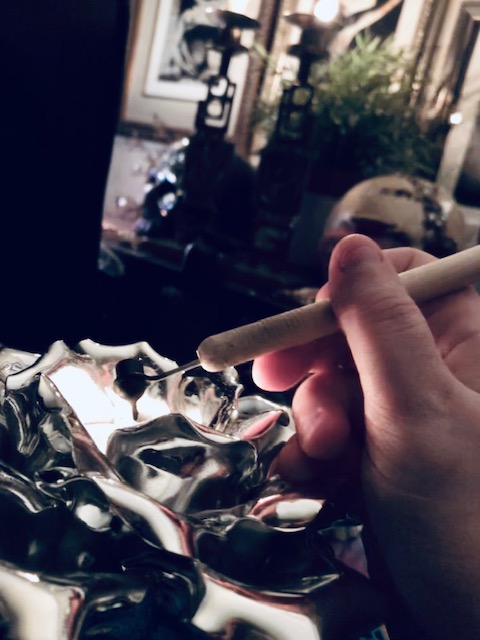
When all relevant areas have been covered in wax, the egg is dipped in the next dye color. That covers up the previous color(s), and once the egg has been removed and the dye dried, the next layer of color can be sealed into the egg with another layer of wax. At the end of the desired amount of dye baths, the wax is removed, and the layers of colors show through, creating the final designs. Although the art of pysankarstvo has been primarily done in Slavic countries such as Ukraine, decorated eggs have also been created by both Ashkenazi and Mizrahi Jewish communities throughout the world, leading to techniques for creating eggs such as these Ladino Pesach Huevos Haminados. Decorated eggs have managed to wend such a path through the world, that their symbolism has adapted to many religious movements one might align with.
It is perhaps, this mixed lineage of pagan, Jewish, and culturally Christian heritage, that drew Nolie Marie Wilson to the art form. It offered them a way to blend in with Christian aspects of their surroundings, and bond with culturally or religiously Christian loved ones, while staying true to their Jewish heritage.
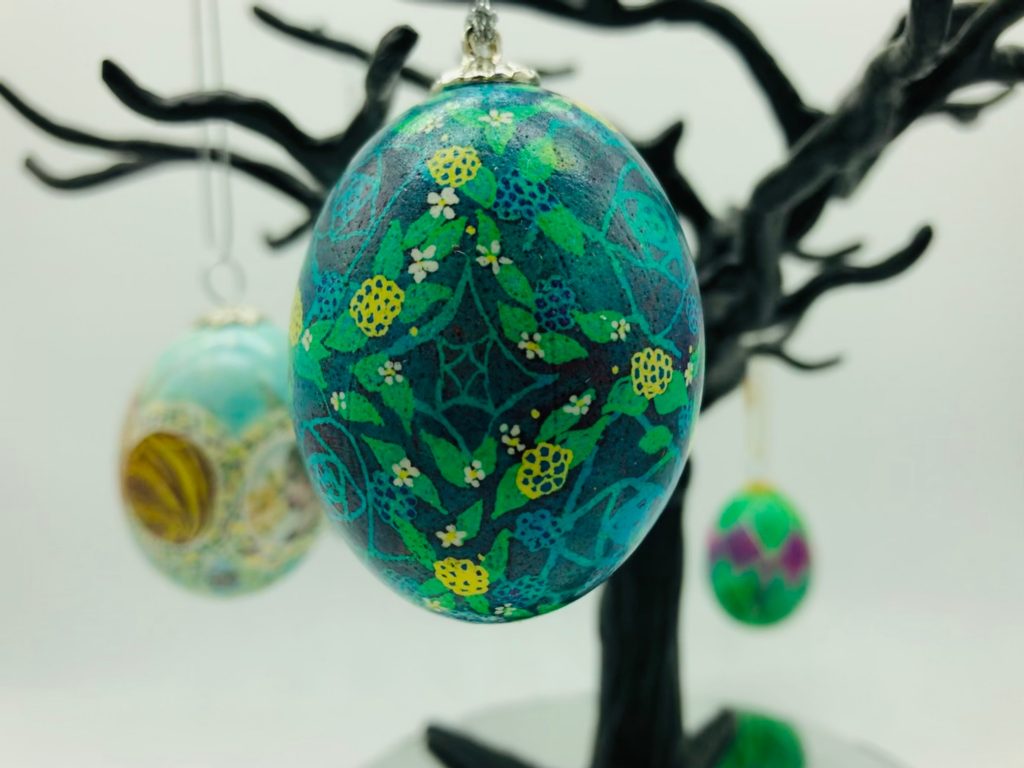
Nolie Marie Wilson grew up in an Interfaith family to Jewish and Christian parents, participating in both Christian and Jewish practices, although Nolie’s, who uses they/them pronouns, participation in Christian practices was by coercion. Growing up in a deeply conservative subculture of Christianity clashed with Nolie’s Jewish heritage, and their childhood was marked by unease, anti-Semitism, and situations in which Nolie found themself relating to the spiritual subcultures of those around them more through artistic culture than belief. To cope with the burden of worsening mental illness caused by the trauma of living in a conservative Christian environment as a closeted queer budding Jewish Atheist, Nolie channeled their dysphoria at the religious abuse into learning art forms necessary to amplify others’ enjoyment of the holidays Nolie was forced to celebrate. If they found forced Christmas celebrations traumatic, they could at least try to enjoy the praise their handmade gifts elicited, and make them meaningful.
The art of pysankarstvo has always been associated with family, for Nolie. A lifelong Girl Scout, and later a Silver Award Winner in their local community, Nolie first encountered pysankarstvo under their troop leader’s instruction, with their mother assisting, and their sister also learning at their side. The process stuck in Nolie’s head mainly because of the complex nature of the visualization needed, which differed from other forms of egg dying or painting. It reminded them of a print they gazed at every time they visited their Ashkenazi grandmother’s house, a Batik by a Jewish artist named Amos Amit. Nolie found themself captivated by the smell of beeswax melting in the kistka, and images flickering between modes of color on the egg, in between dye baths, like a warped VHS tape.
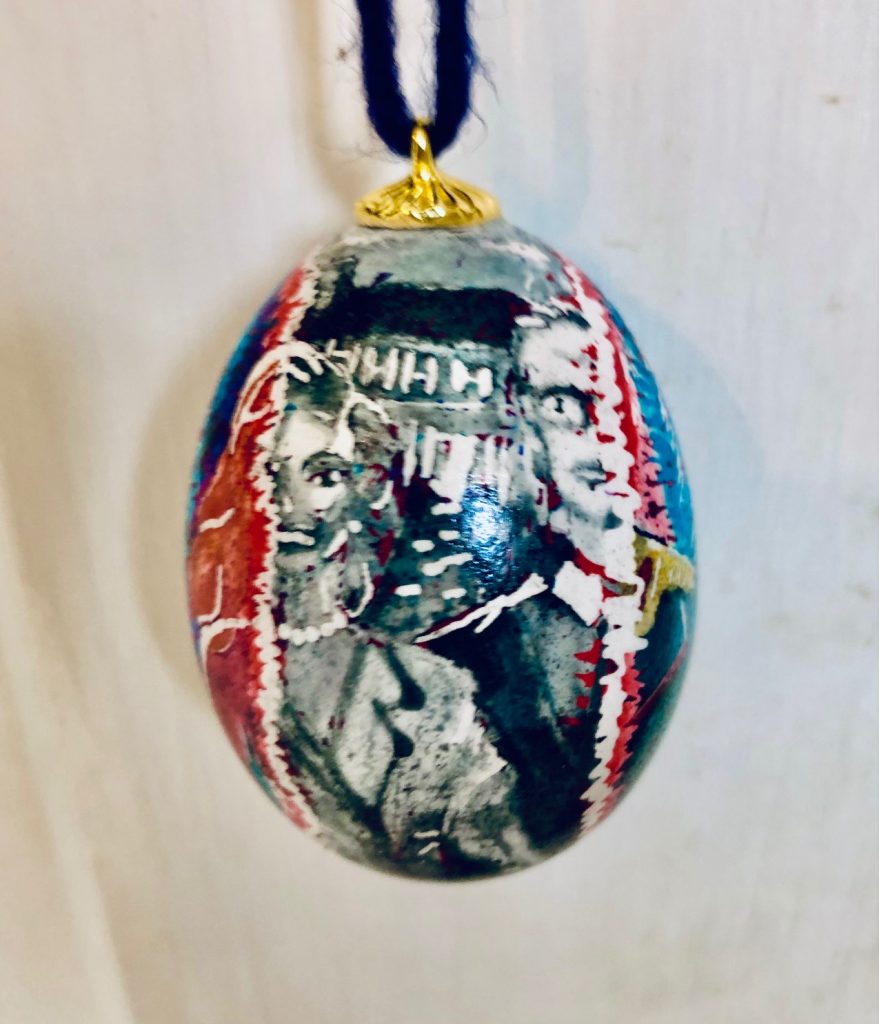
Nolie continued to dabble in the art over the years, but the cost of materials kept them from doing it too regularly. The pysanky they produced remained in their mind as a symbol of resistance during Easter celebrations, though, as the eggs they messed up in past years could be useful for pranks, for a clever one with a mind to utilize them that way–
Storage tip for when you bring a pysanka into your home: if it is a full egg pysanka (if the egg has not been emptied of yolk and white and the shell is fully intact), store it with lots of air circulating around it, and avoid disturbing it. As the egg ages, its insides dry out and decompose and wick up through the membrane of the shell into the outside air, allowing it to remain in stasis with the setting it is resting in. If the shell cracks, without enough air flow during that aging process, the shell can depressurize more abruptly. When this happens, it lets off a noise like a firecracker, smells like sulfur, and your beautiful egg will be no more. This generally happens after the eggs have been stored for quite some time in a fairly compressed space, such as a carton. Maybe a few years. Hollow eggs can do this in certain situations as well, such as if they fall off your mantel, into your fireplace, and overheat. However hollow eggs have generally been rinsed inside, so they likely would not smell as strongly. The ideal solution is simply to be aware of what type of egg you have acquired and to plan carefully for its display and storage, to ensure you’ll have it many years to come.
And also, if you are a fellow Pysanky artist, never throw out your mistake or practice eggs, in case you need a DIY Stink Bomb.
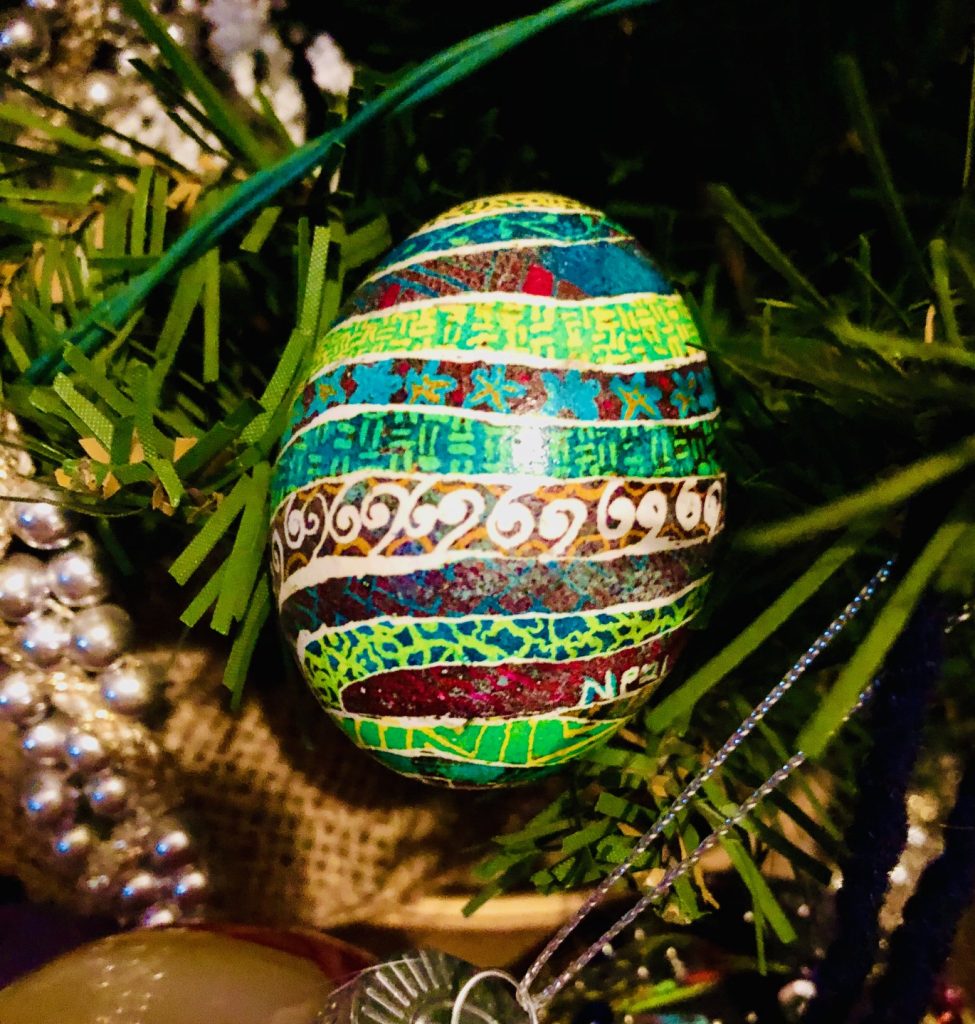
Nolie returned to the art of writing pysanki during the Covid-19 Pandemic. Seeking a medium that they could work with while in bed due to their medical condition, that would be fairly neat, and have minimal recurring expenses such as canvases, Nolie realized that pysanky were perfect, allowing them to work in low light, not have much moderate lifting or difficult movement involved, at least once the eggs were hollowed, the most arduous part of their labor of love. Their partner-in-crime learned a new love of quiche, as they hollowed out dozens of eggs, writing pysanki long into the night around waving cat tails, rolling blankets, and the various medical ameliorations nearby, to help control their symptoms.
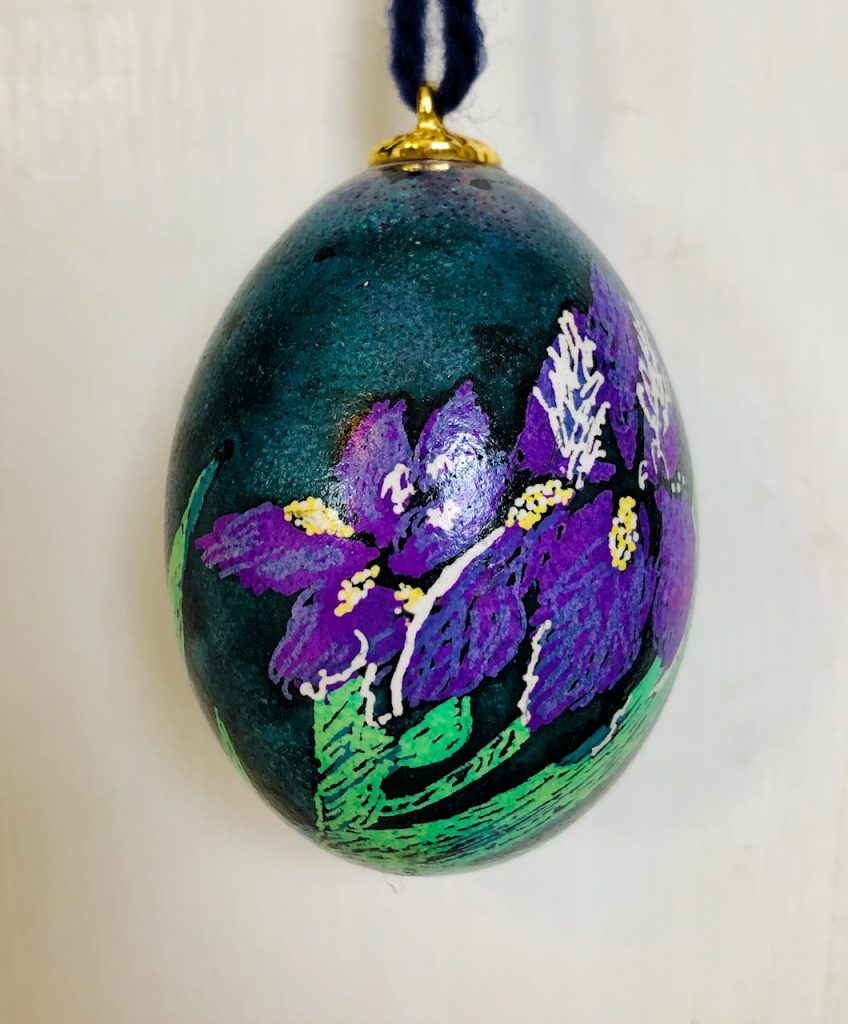
Soon, Nolie’s family became overwhelmed by their nostalgic pysanki gifts. And Nolie turned their attention toward offering their eggs to the wider public. Each egg is unique, completely hand-sketched, hand-dyed; many feature hand-painted, etched, or gilt elements, as well. Nolie Marie Wilson rarely works with traditional Pysanky designs outside of custom orders, and all designs should be assumed to be original work for the purpose of copyright. For designs based upon reference images, copyright for the reference image is as credited.
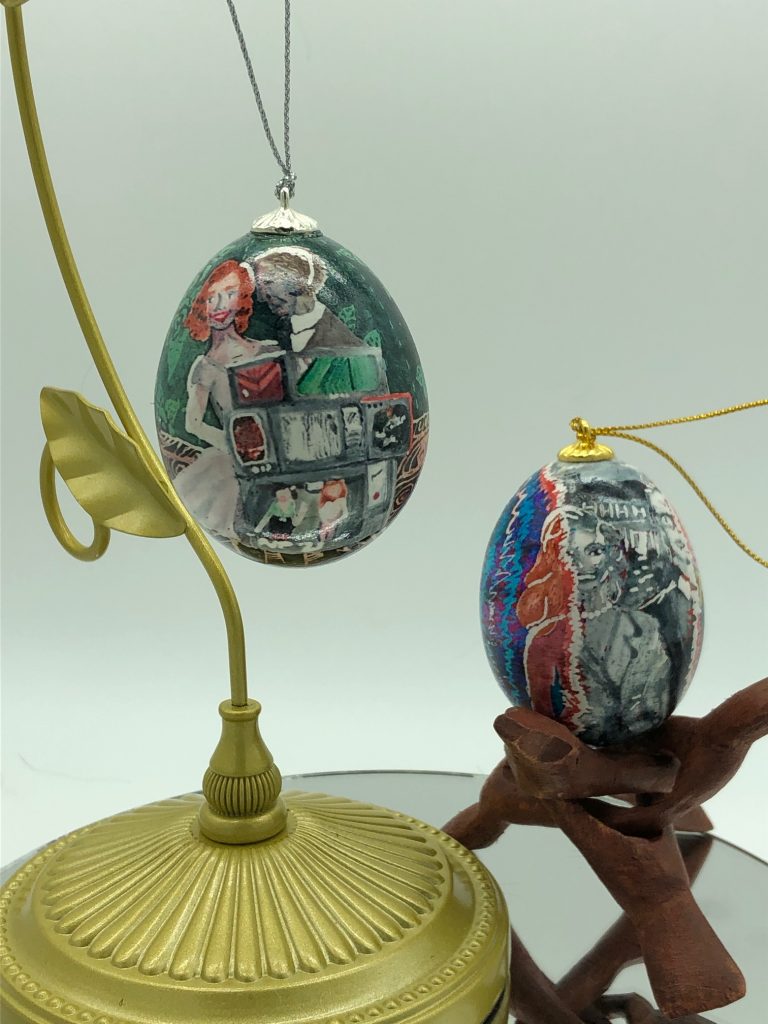
Nolie’s lifelong issues with tendinitis stem from their genetic Ehlers Danlos Syndrome. Perhaps wrists that seize up, and fingers with tremors are difficult tools to work with, but Nolie has sought to adapt their method to accommodate these disabilities, and allow the art to reflect the subtle asymmetries, quivers, and textures, that reflect the biodiversity represented in Nolie’s unevenly functioning hands, and unusually lit work setup. Because of Nolie’s belief in adaptability as the hallmark of disability, and their focus on incorporating identity through art, many of their works adapt traditional Pysanky divisions (segments of the egg that are filled with traditional or artist-proprietary patterns), but shy away from the methodical, precise, reproducible style that characterizes traditional Pysanky, out of respect for Nolie’s natural body’s limits. By highlighting the clash between meditative structure, uniformity, and lack of expected cohesion, and the appearance of Pysanky divisions as structures that resemble cells under a microscope, or small life forms sometimes mutating, or even vines on a trellis, they also make a statement about the suitability of their own perfectly imperfect body as a tool for art and craftsmanship.
In addition to being inspired by pop culture, Nolie is also inspired by nature. They frequently work natural themes into both traditional, and abstract Pysanky. Natural themes have been a compelling throughline in Pysanky for centuries, with various symbols representing elements of abundance, wishes for fertility and good health, and other well-wishes, and offers of awareness of the power of nature to affect how we move through the world.
Much of Nolie’s approach to art is about the preservation of memory. Some of Nolie’s more formative recollections were of their grandmother telling them of their family’s connection to HaShoah, putting a copy of Anne Frank’s diaries into their hands, much too young, because she knew Nolie had already learned to read at an advanced level, and even though the content itself was above the young one’s maturity level by WASP standards, it was too important to gamble with not having the chance to impart it later–Jewish children do not have the opportunity to avoid learning about the Holocaust young, the same way that Black children do not have the option to avoid learning about racism when their white peers are assumed to need protection from gaining awareness of the deep ugliness of societal bigotry. And the deepest fear of probably any Jewish family with Intermarried loved ones is that their heritage will be completely erased in the melting pot. For this reason, the balance between cultural identity, and free will and open-heartedness is often an inter-community struggle, one that catches children in Interfaith families like Nolie’s in a particularly delicate place. Nolie has sought to honor that in adulthood, especially as an adult in their own interfaith partnership. Their art speaks to their lifelong recognition of individuals’ place within history, both as actors and creators, and as those who document, define the narratives of victory or tragedy, and lay claim to which pieces are important.
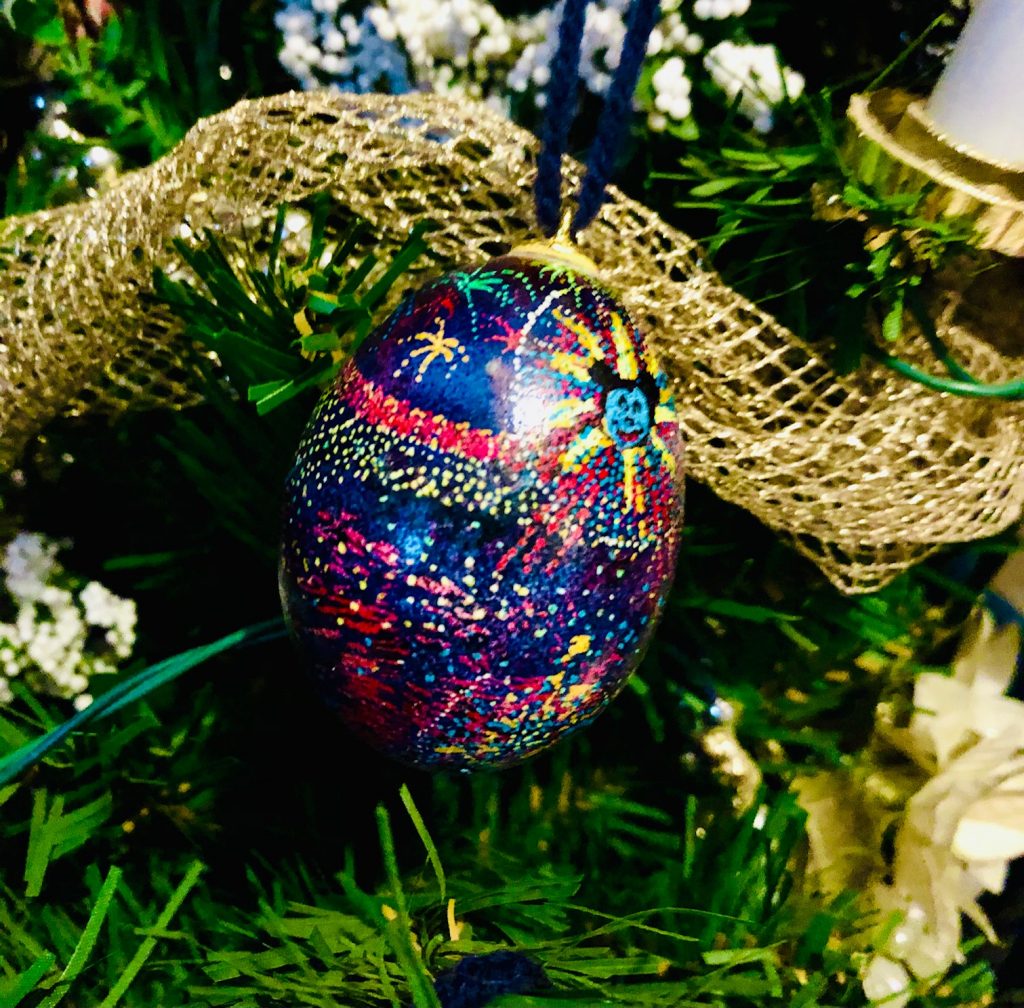
Just as the earliest Impressionist painters were often Jewish, revolutionizing Western art with an approach that prioritized capturing the emotion and “sense” of a scene over the exact methodical detail, Nolie locates their “Panorama” style Pysanky as expressive explorations of the feelings evoked in the memory of the place that inspired each Pysanka. These snapshot-like Pysanky can evoke a setting from a movie, or a location you have taken a number of pictures of, or a short bit of video. But they are intended to feel expansive, full of motion- like turning your head and taking in a full view, and finding yourself, however temporarily, in another world. These eggs are exacting to plan and execute, requiring working under a magnifying glass, countless dye baths, the use of an extra-fine tipped kistka (stylus that writes with wax) with a hole smaller than the tip of a pin for the majority of the work, in addition to the design-work of the initial sketch, and figuring out the dye order to best allow details to be captured as successive dye paths erode the pencil outlines, and make it difficult to see unwaxed outlines.
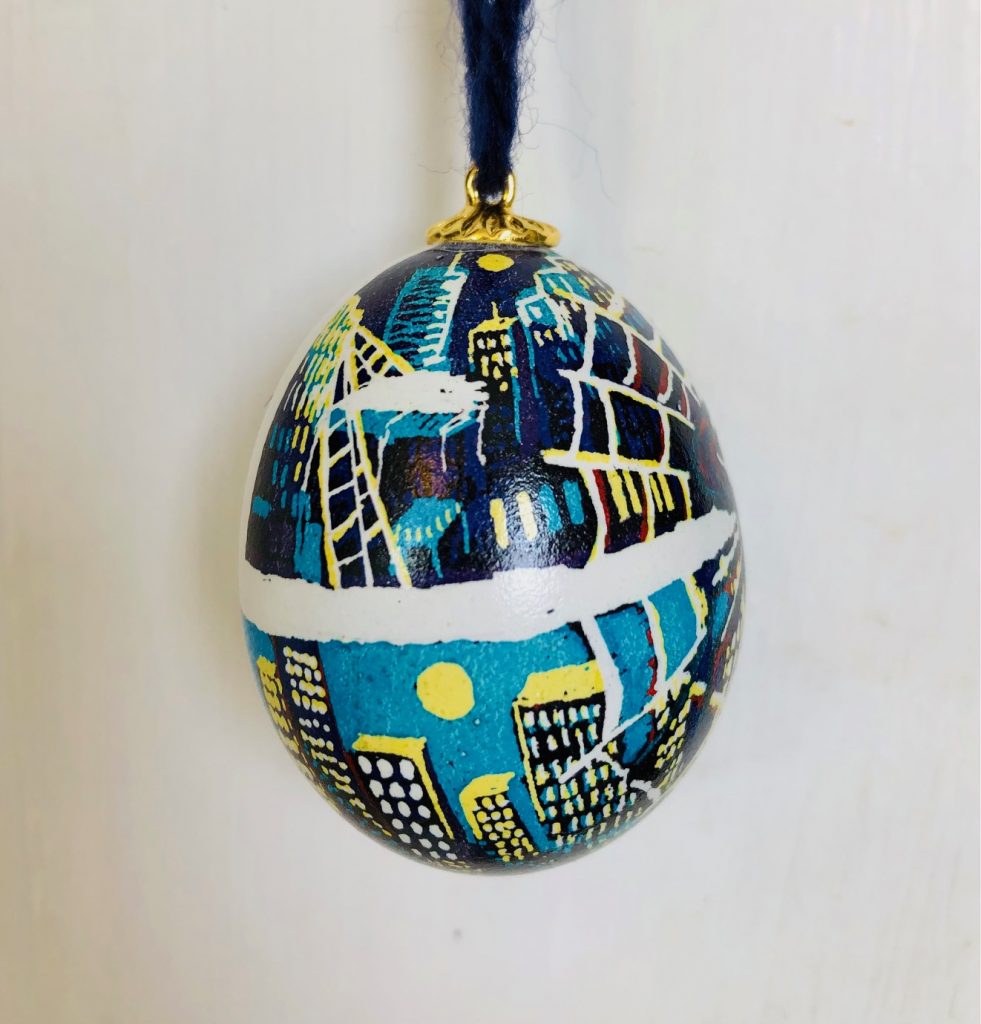
Nolie Marie Wilson’s unique Pysanky eggshells are available for purchase, both in the form of custom commissions, and one-of-a-kind ready-to-ship pieces fitting a variety of decor sensibilities from traditional to modern. Among them are Nolie’s signatures, The Roaring 20s, a series of Art Nouveau-inflected beauties full of complicated stained-glass shading, striking contrasts, and stunning line-art, and the Mask Ups, a series of unique designs adapting traditional Pysanky symbolism to the modern context of the Covid-19 Pandemic as a storytelling tool to document families’ experiences, and provide an aid to discuss difficult events or experiences.
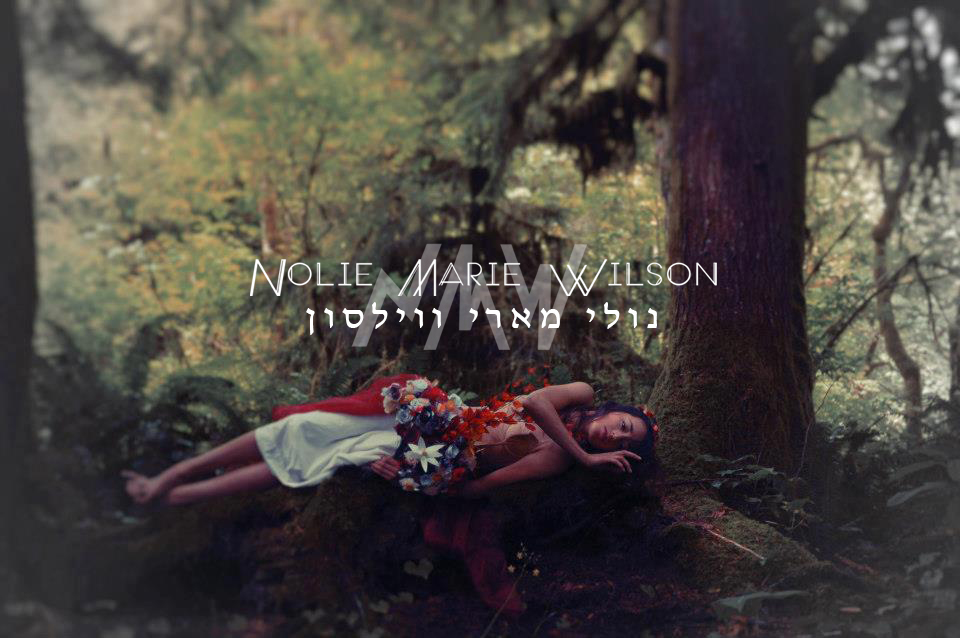


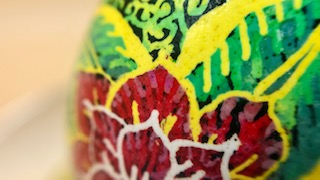


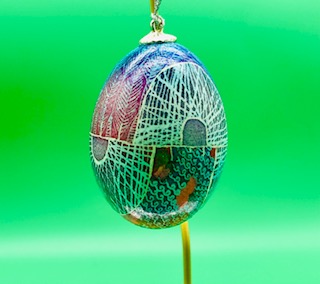


Comments
No Comments